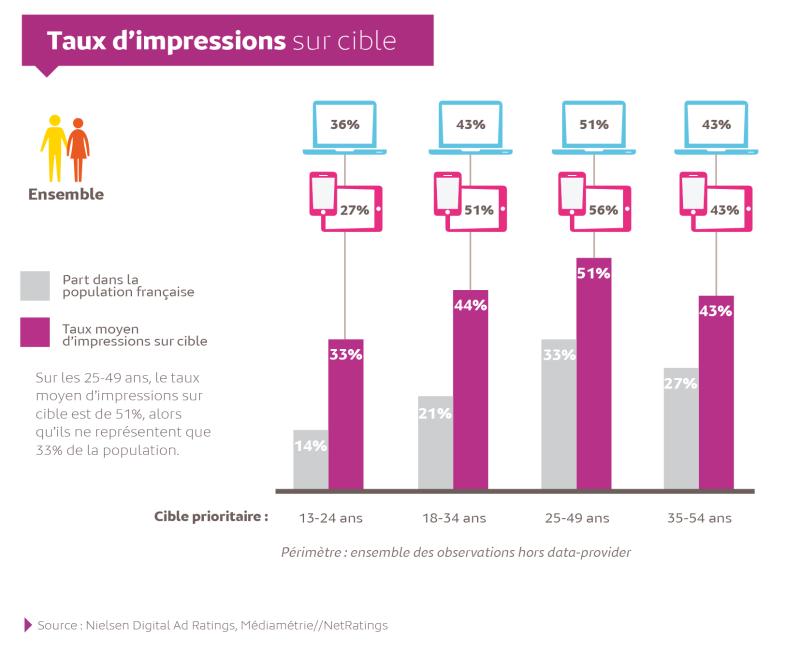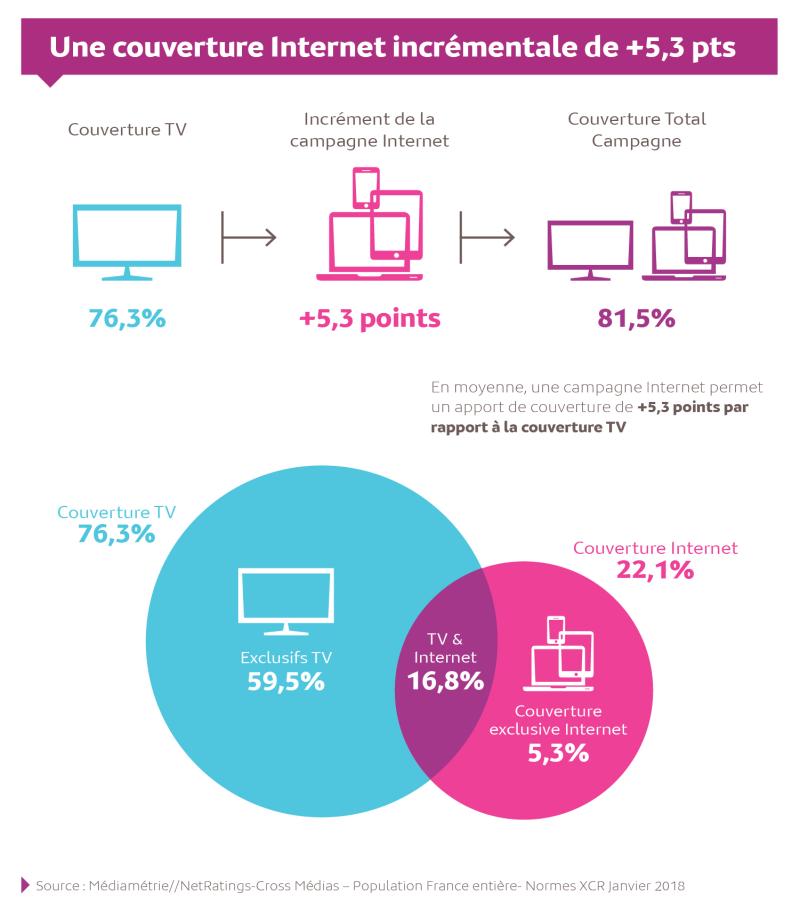- Home
- Results & Studies
- Marketplace seeks trusted partners in online advertising
Marketplace seeks trusted partners in online advertising

As a consequence, advertisers and their agencies have legitimate expectations concerning the relevance of these investments, at a time when digital is subject to constant and rapid changes. How can we be certain that our target audience is being reached? What assurances exist about the quality of the environment in which the ad appears? Is the ad clearly visible? The market as a whole is setting out to find the answers to these very questions.
A need for quality and transparency
“Only 25% of the money we spend on digital advertising is actually used to reach consumers. We need to stop letting digital get away with everything: it’s time we took steps to force it to mature,” commented Marc Pritchard, Chief Brand Officer of Procter & Gamble who recently called on the digital marketplace to increase transparency. And his voice is not the only one. His opinion is shared by many in the IAB (International Advertising Bureau), ANA (Association of National Advertisers) and other advertisers.
Given the increasing number of intermediaries, process automation, and the prolific amounts of data available, measuring the performance of campaigns is a renewed challenge for advertisers.
Recent controversies surrounding fraud, visibility and the publication setting of online ads have only served to increase their distrust of a media that, nonetheless, is a powerful, promising and engaging one.
At the same time, the proprietary indicators supplied by some platforms have received widespread criticism, both for the way in which they are calculated and for their representativeness.
As a result, advertisers and media agencies are demanding quality, transparency and brand safety in their ads.
In response to these concerns, the Digital Ad Trust label was launched onto the market. At the end of 2017, this interprofessional initiative was initiated by the SRI, UDECAM, GESTE, UDA, ARPP and IAB France, with a focus on creating a more transparent and better-regulated marketplace. In real terms, its purpose is to assess and enhance the quality of websites which are committed to responsible advertising practices. The label guarantees that the ad will appear in a trusted, quality, and secure environment with optimal visibility.
Sharing common indicators
Against this background, it is easy to see why adopting common measurement standards and indicators that are calculated in the same way for everyone and certified by third party accreditors has become crucial to preserving stakeholder trust. In a similar scenario to TV, we must create a genuine common currency for the digital audience.
Bertrand Krug, Director of Médiamétrie's Internet Department stated: “Nowadays, the internet is a channel that is increasingly used for branding campaigns whose performance cannot solely be measured by short-term indicators such as click rates and leads, etc. These branding campaigns have an effect in the long term, and before we can assess their impact on sales, we need to accurately measure the strength of the campaign and the frequency of exposure among its target audience. As we all know, no exposure equals no impact.”
To this end, we need shared indicators. As part of the UDA’s Audace 2020 programme, a working group including Médiamétrie and other stakeholders (Bearing Point, IREP, Kantar, UDECAM and AACC) is dedicated to creating a benchmark in advertising impact, for the entire marketplace.
Measuring advertising exposure
The good news? Measures of advertising exposure do exist, and they are proven. Already used by over 500 advertising market stakeholders in France, the Digital Ad Ratings solution is the independent benchmark measurement for evaluating the exposure of advertising campaigns. Digital Ad Ratings satisfies the requirements of advertisers, agencies, advertising sales houses and programme buying platforms.
With an eye on consistency and transparency, Nielsen and Médiamétrie//NetRatings have offered the Digital Ad Ratings standard in France since 2014. It uses an innovative combination of panels, advertising tags and data provider information to deliver highly granular results and maximum representativeness. Digital Ad Ratings (DAR) measures the daily coverage, repetition and on-target impressions of online campaigns, across all screens (computer, smartphone, tablet). The advantage of DAR is having a common indicator: the on-target[i] impression rate. The latter can rank a campaign relative to norms observed over all the campaigns evaluated – 4,000 to date. The targets measured in DAR are categorised by gender and age. Developments are in progress to incorporate other information about the targets. Thanks to a partnership with Integral Ad Science, it is also possible to measure the visibility on display and video screens.
For example, the DAR norms hold that for an online advertising campaign to reach about 1/3 of 25-49 year olds (30%), an average of 40 million advertising impressions must be served. The computer is still dominant in advertising: across all of the campaigns measured, nearly 2/3 of impressions were on a computer, and more than 1/3 were on mobile screens (35%). However, these impressions on mobile screens (smartphone / tablet) generated 42% of the total coverage of the plan, since repetition levels were lower than on computers.
Among the campaigns targeting the 25-49 demographic, the average on-target impression rate was 51%, whereas this age group only made up 33% of the population. This means that more than half of the impressions served actually reached this age demographic.

Accredited in the United States by the MRC (Media Rating Council), DAR was audited by the CESP (centre for advertising media research) in France. By analysing the technical process of measurement implementation, the quality of the data sources used and the methodologies, the CESP shone a light on Nielsen and Médiamétrie//NetRatings expertise.
XCR is another measurement tool developed by Médiamétrie//NetRatings. It can be used to evaluate the performance of a TV / Internet bi-media campaign. XCR measures the contribution of the internet campaign compared to the TV campaign, in terms of coverage, repetition, and distribution of contacts. According to the norms established from 158 advertising campaigns measured using XCR, on average, an online campaign added 5.3 points of additional coverage compared to the TV campaign.
This means that 23% of those exposed to the online campaign saw it exclusively and did not see the TV campaign. On average, over 2/3 of internet impressions were served on individuals who were the least exposed to the campaign shown on television (children and those who did not see the TV campaign).
Therefore, the internet campaign helps to rebalance the distribution of contacts by managing repetition and reaching individuals who did not see the TV campaign, thus increasing the effectiveness of bi-media plans.
Since young people are more focused on digital than their elders, internet campaigns naturally reach them more: the incremental coverage of an online campaign compared to a TV campaign is about 10% for the under 35 demographic, twice the average for all age groups combined.

In order to enhance the relevance and reliability of online advertising video measurement, in 2012, Médiamétrie alongside publishers, advertising sales houses, agencies and professional bodies started a process to define a GRP for online video, in partnership with Integral Ad science. The principle being to create a common indicator for all video formats whether broadcast on television or the internet (computer, mobile or tablet). To enable comparisons between the performances of TV and online video campaigns, two criteria were used to define online video contact: visibility, (how much of the advert was visible on the screen) and viewing duration compared to total ad duration. Using this definition, online video contact is consistent and, therefore, comparable with the contact used to measure the television audience, itself based on the average audience for the screens.
Bertrand Krug summed up: “Digital Ad Ratings and other initiatives to unite media stakeholders around data, are supporting the digital market towards greater maturity. Measurement builds trust. »
Three questions for Bruce Hoang, Director of Digital Communication and Data at Orange France
What is your analysis of the current digital advertising market?
It is a constantly evolving market because it has lacked transparency and has somewhat over-promised on its performances. For a long time, it was the preserve of digital experts and was never really aligned with other media. In reality, from a user point of view (exposed to 5,000 ads daily of which they will remember only seven), there is no reason why digital would compete with other media. Although digital professionals have come up with some interesting creations, their operations, commercial and measurement practices have failed to instil a climate of trust among investors / advertisers like us.
This market is also evolving because of the data generated for each user and notably also due to privacy issues. The arrival of GDPR calls into question many aspects of how companies and the service provider ecosystem harvest data without necessarily having user consent.
This market is now in the process of structuring itself.
What are your needs, and your expectations in this field?
At Orange, we set up promotional event websites and specific advertising operations online. First of all, as an advertiser, my aim is to engage the public – who are potential targets for Orange – in a manner that is positive for the brand and also responsible. The ad content and the story we are telling must be experienced in an engaging and non-intrusive way. My aim is to respect each user's space and offer them the marketing content that meets their needs (by thoroughly listening to what they want) and fits in with their lives.
Brand safety is also an important issue. For us, trust comes via the third-party bodies that are able to reassure us and to prevent certain practices.
Finally, we do a lot of media buying through our agency Havas Media. There is a compelling need for measurement when we have multiple brand campaigns. For each advertising campaign, what matters is the measurement of points of contact, and their distribution according to the targets. We need feedback from all digital points of contact – with Digital Ad Ratings – and also with XCR for television. The pressure and distribution of points of contact enable us to find out whether the exposure worked optimally. Measurement is both a type of reassurance and orientation. Measurement is needed so that we can say if we reached the right target or not, as well as for knowing where improvements can be made and what has worked well.
DAR and XCR complement the impression reporting tools. Importantly, they allow a macro approach, a view that runs across advertising sales houses and platforms.
What changes would you like to see?
Ideally, we’re looking for indicators of effectiveness from day to day, as with the DAR. This allows us to optimise our campaigns. We hope to have this with XCR too, i.e. the ability to adjust the digital plan from day to day, depending on the contact distributions completed for TV.
Another major expectation of ours is the ability to link the media performance of points of contact with social listening qualitative indicators … that would be very interesting.
Laure OSMANIAN MOLINERO
[1] An impression means showing an advert on the web user’s screen
Test of significance of the differences between two proportions
Used to assess whether the difference between 2 proportions is significant at the 95% threshold
Warning: only applies to a proportion. The Average Rate is an average of proportions and the Audience Share a ratio of proportions. This tool is provided for information purposes. It cannot be applied for professional purposes without further precautions.
des médias
edition
definitions